
 NASA
staff admits never leaving low Earth orbit yet
NASA
staff admits never leaving low Earth orbit yet
Yet
the new, stronger, heavy lift SLS rocket and Van Allen Belt
radiation resistant, heavy, and thick walled
Orion capsule can
safely take astronauts beyond Low Earth Orbit (below 1200
miles)
to Make American First on the Moon
again!
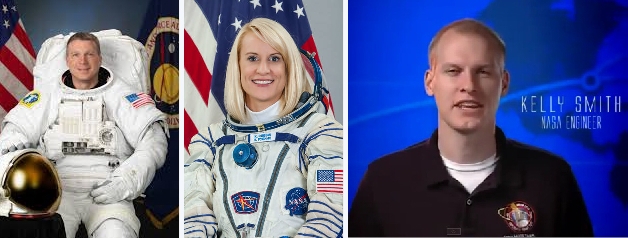
NASA Astronauts Col. Terry Virts, Dr. Kathleen Rubins, and Dr. Kelly Smith
(NASA Engineer)
say in official NASA videos that no one has gone beyond low Earth orbit yet, through the Van Allen Belts
of dangerous radiation. This means no one has landed on the Moon yet. But
the USA soon will!
Official NASA channel videos
Colonel Terry Virts, virtuous NASA Astronaut and Commander of the ISS,
bravely and patriotically tells the truth to the USA citizens.
"We only can fly in Earth orbit." "That's the farthest we can go."
"Moon, Mars, asteroids, there are a lot of destinations that we could go
to."
https://www.youtube.com/watch?v=3gJ0DfULLGU#t=16m0s Virts
Dr. Kathleen Rubins:
"We are also really pushing the boundaries in terms of where we are going
forward, with exploration.
I think humans are naturally driven to do this. And, this is really the
beginning,
I think, of human beings leaving low Earth orbit. I certainly plan on
being around to see that."
https://www.youtube.com/watch?v=P03vvRW5EIg#t=8m40s Rubins
Dr. Kelly Smith:
"We will pass through the Van Allen Belts - an area of dangerous
radiation"
"We must solve these challenges before we send people through this
region of space"
https://www.youtube.com/watch?v=IpXEpJAb8ZY#t=3m0s Smith.
Dan Hewitt
NASA's Dan Hewitt:
"That gives all of our engineers and flight controllers the chance to really
learn about Orion's systems in deep space,
learn about flying a space craft farther than we've ever sent one intended for
humans.
We are going beyond anywhere we ever went for Apollo." 9 min 30 sec
https://www.youtube.com/watch?v=pDeNo0fQslo#t=8m30s
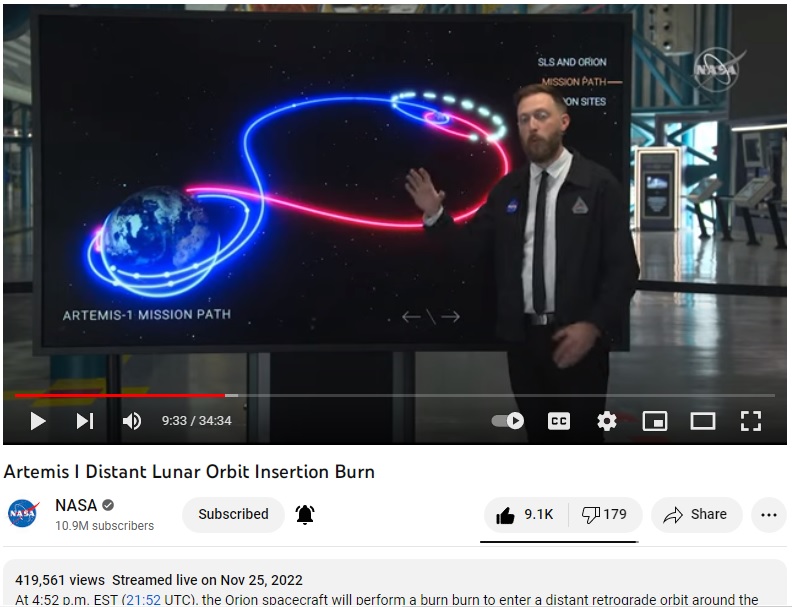
The new generation of NASA staff are coming forward about the Apollo 1969-1972
"landings", and risking their jobs, by acknowledging the Van Allen Belt
radiation.

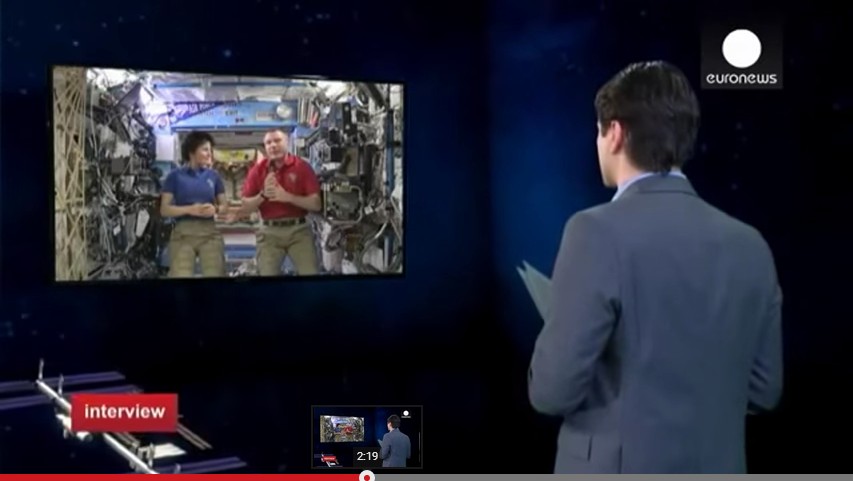
USAF Col. Terry Virts, ISS Commander, NASA astronaut
 www.youtube.com/watch?v=nX_QsRJx1J4
www.youtube.com/watch?v=nX_QsRJx1J4
www.youtube.com/watch?v=3gJ0DfULLGU#t=11m0s
NASA.Gov 11:00
"We only can fly in Earth orbit."
"That's the farthest we can go."
"Moon, Mars, asteroids, there are a lot of destinations that we could go to."
“Well, that is a great question. The plan that NASA
has is to build a rocket called SLS (Space Launch System) which is a heavy-lift
rocket, it is something that is much bigger than what we have today and it will
be able to launch the Orion capsule with humans on board as well as landers or
other components to destinations beyond earth orbit.
“Right now we can only fly in Earth orbit, that is the farthest that we can go.
This new system that we are building is going to allow us to go beyond and
hopefully take humans into the solar system to explore, so the Moon, Mars,
asteroids, there are a lot of destinations that we could go to and we’re
building these building block components in order to allow us to do that
eventually.”
http://www.euronews.com/2015/03/16/the-final-frontier-astronauts-on-iss-tell-euronews-about-humanity-s-future-in-/


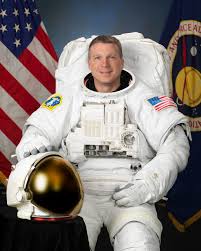

ISS Crew Discusses Life in Space
https://www.youtube.com/watch?v=3gJ0DfULLGU
NASA engineer admits radiation danger of the Van
Allen Belts
https://www.youtube.com/watch?v=IpXEpJAb8ZY
Kathleen "Kate" Rubins, PhD (Stanford Medical School)
Beautiful, intelligent, and honest. NASA
Astronaut. Mission #49
Biologist tudied heart cells beating, DNA sequence, and how fluids behave in
space.
Honestly says NASA has not yet gone beyond Earth orbit.
8:40 on
https://www.youtube.com/watch?v=P03vvRW5EIg#t=8m40s
22-Sep-2016
"We are also really pushing the boundaries in terms
of where we are going forward, with exploration.
I think humans are naturally
driven to do this. And, this is really the
beginning,
I think, of human beings leaving low Earth orbit. I certainly plan on
being around to see that."


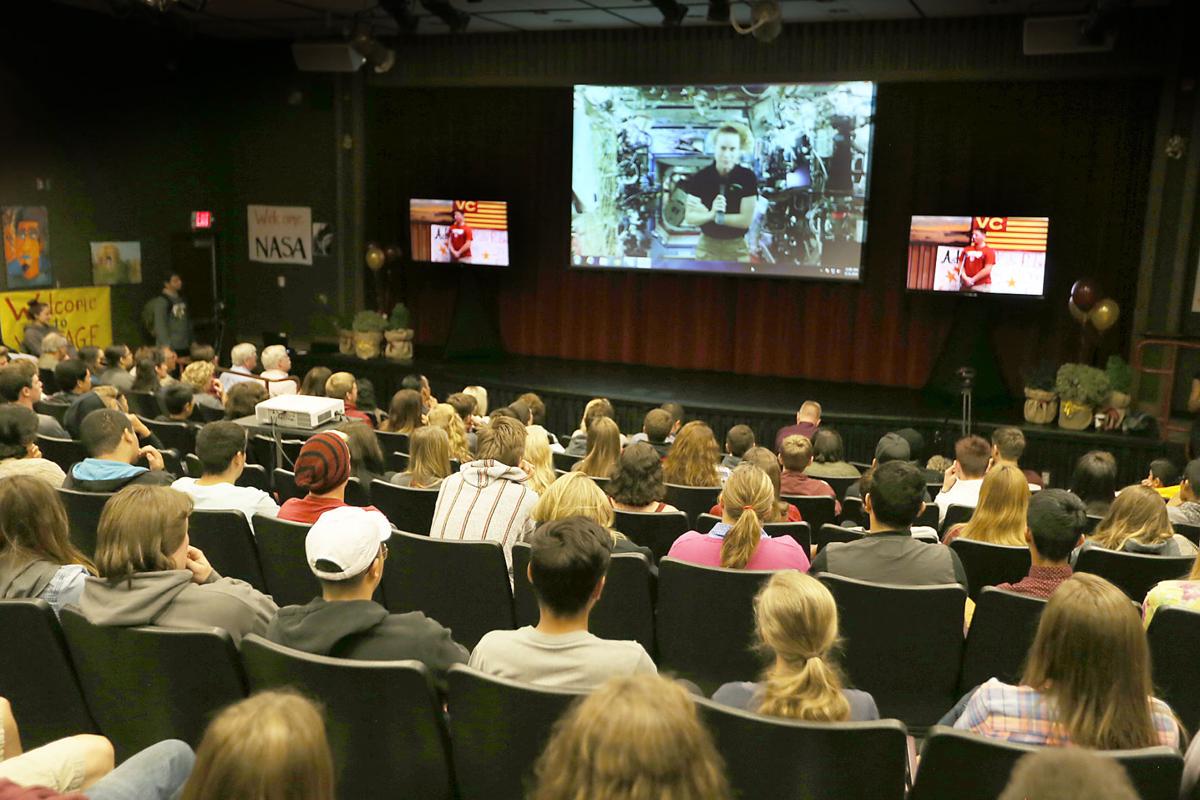
https://www.youtube.com/watch?v=V1O7XfcXGTI#t=6m40s
Dr. Rubin talks with her home town, Napa California High school students on
Wednesday September 14, 2016
Kate Rubins with President Trump congratulate Peggy
Whitson for breaking the record for days in orbit by a US astronaut, 534 days.
At 3:33 she hints that the "Space Station is providing a key bridge from us
living on Earth to going somewhere into deep space" and the SLS "will take us
further than we have ever been away from this planet."
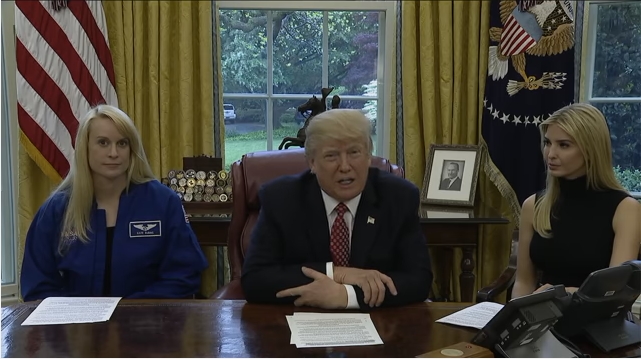

https://www.youtube.com/watch?v=5HMwKwWnV4k 24 April
2017
NASA's Orion Mission
Engineer Kelly Smith says the Van Allen Belts
are dangerous
 `
`

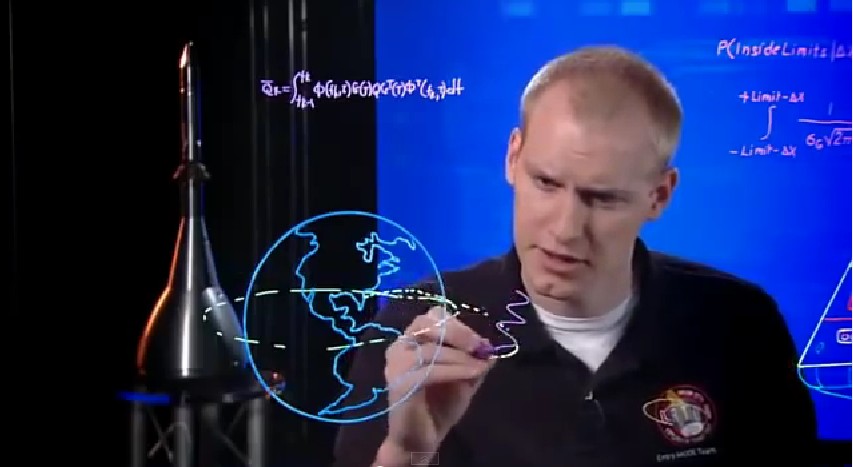
No astronauts will be aboard Orion, to measure the "extreme radiation"
"deeper into space than we have ever gone before"
"We will pass through the Van Allen Belts - an area of dangerous radiation"
www.youtube.com/watch?v=IpXEpJAb8ZY#t=3m0s
"We must solve these challenges before we send people through this
region of space"
"Radiation like this could harm; the guidance systems, on
board computers or other electronics on arrival, naturally we have to pass
through this danger zone twice , once up & once back , but Orion has
protection. Shielding will be put to the test as the vehicle cuts
through the waves of radiation sensors aboard will record radiation levels
for scientists to study, we must solve these challenges before we send
people through this region of space, for this flight its time to head home."
Original source video on official NASA channel - Orion:
Trial By Fire
https://www.youtube.com/watch?v=KyZqSWWKmHQ
Dr. John H. Mauldin
PhD, Science Education, University of Texas;
MS Physics, Purdue; BS Physics, Cornell
Worked on the NASA Voyager project
Prospects for Interstellar Travel - American Astronautical Society
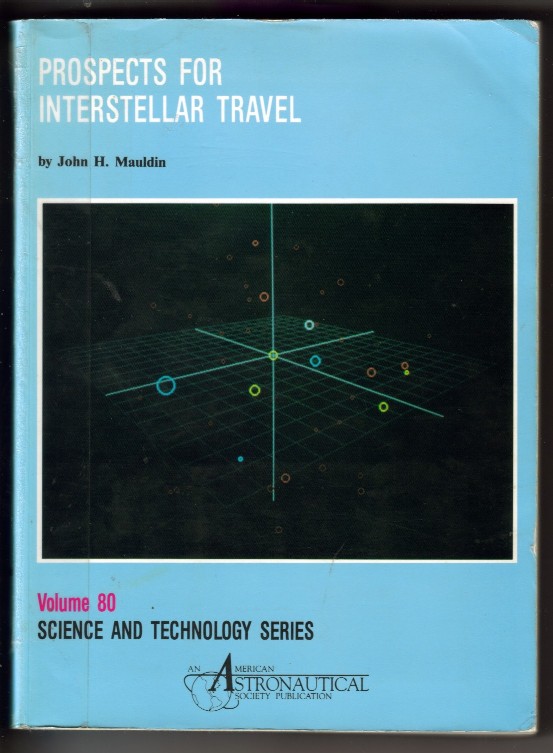
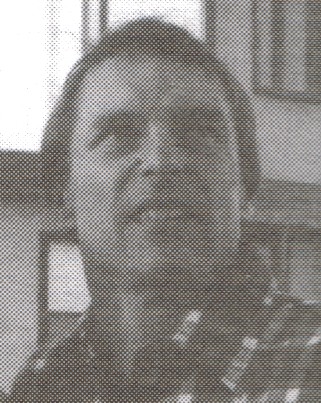

John H. Mauldin has a bachelor's degree
in engineering physics (Cornell University, master's in physics (Purdue
University), and Ph.D. in science education (University of Texas). He
has four books published in science and technology covering mathematical
graphics in Perspective Design (1985; second edition now being prepared),
physics in Particles in Nature (1986), solar energy in Sunspaces (1987), and
optics in Light, Lasers, and Optics (1988). He has taught physics and
engineering at several colleges and universities, done education research
and development at MIT and University of Texas, and worked at NASA in
electronic power engineering on an early phase of the Voyager missions.
Cosmic particles are dangerous, come from all sides, and require at
least 2 meters of solid shielding all around living organisms.
Solar (or star) flares of protons, an occasional and severe hazard on
the way out of and into planetary systems, can give doses of hundreds to
thousands of REM over a few hours at the distance of Earth [b-Lorr].
Such does are fatal and millions of times greater than the permitted dose.
Death is likely after 500 REMs in any short time.
The Apollo capsule was not even 1/10 meter thick, the Van Allen Belts have
over 100 REM/hour, so the astronauts could not have survived going to the Moon.
Press Conference about Atemis on August 4, 2022
NASA's Artemis 1 launch with the new SLS rocket is scheduled August 29 as an
unmanned mission to orbit the Moon. Michael Sarafin, Artemis Mission Manager
says at 16:00
"We are also going to fly out through the Earth's Van Allen Radiation Belts.
We will no longer be afforded the ability to have the Earth's magnetic field
shield us from the deep space environment. So, we are going to fly into the
deep space high radiation environment. We will see what it is like for
astronauts to fly on subsequent missions under those conditions."
(Hmm. Didn't Apollo missions do that in 1969-1972? Artemis 1 will do unmanned
testing as Apollo 6 did in 1968.)

Bill Nelson, NASA Administrator:
"It's a future where NASA will land the first woman and first Person Of Color
on the Moon." (How about just the best qualified?)
"Orion will venture farther than any space craft built for humans has ever
flown"
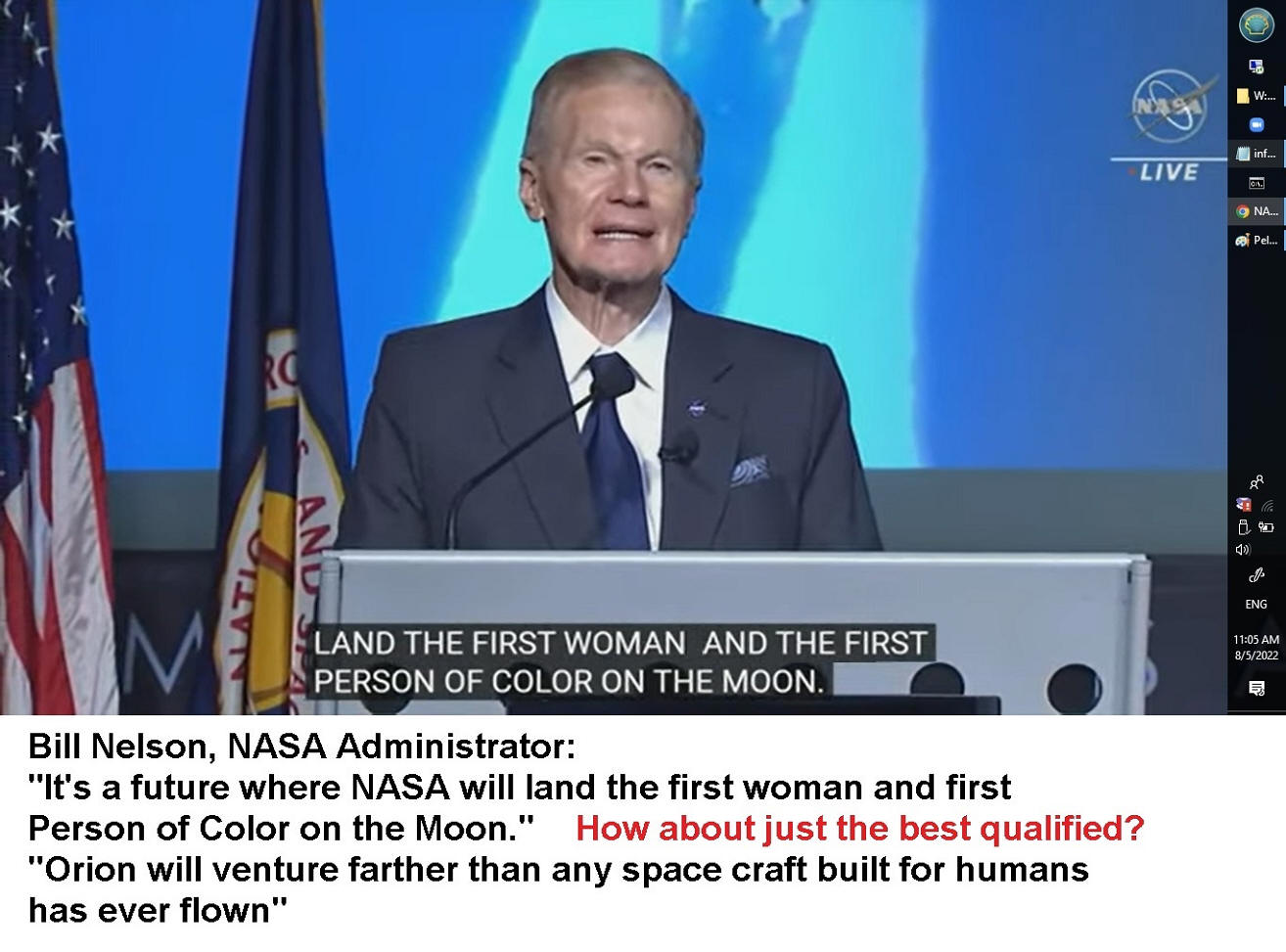
Howard Hu, Orion Program Manager
"We are going to be able to execute the entire space craft system, and
demonstrate all the capabilities we have shown on the ground, in that harsh
deep space environment."
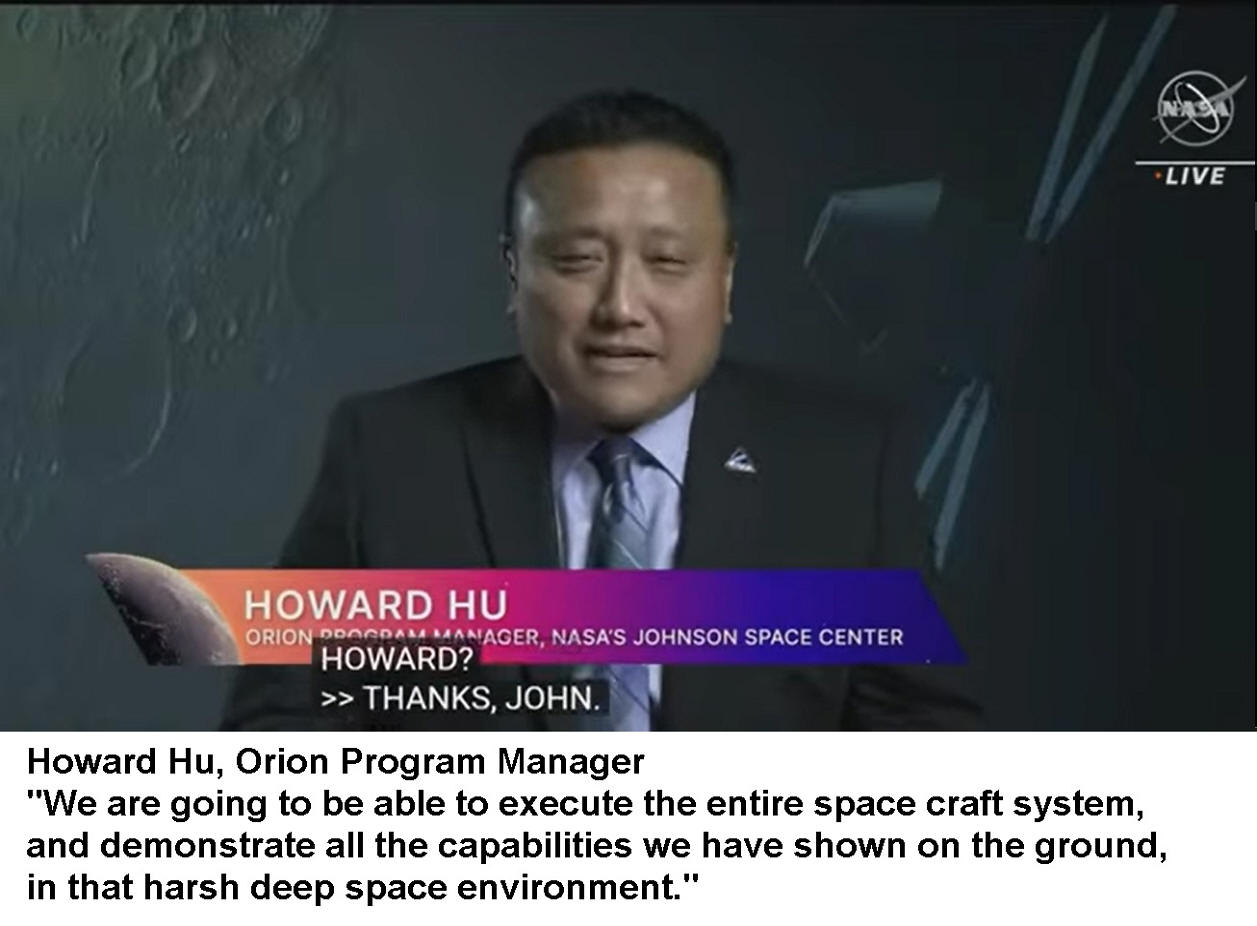
Dr. Bhavya Lal at 21:00:
"As Orion will be beyond the protection of Earth's magnetic field it will be
exposed to a harsher radiation environment than crews aboard the International
Space Station experience. Mike mentioned the Van Allen Belts...Radiation is
one of the top challenges for human exploration beyond LEO (Low Earth Orbit)."

John Honeycutt, SLS Program Manager (33:00)
"So now, for the first time since 1972, we are launching a vehicle that is
designed for deep space...I have a high level confidence that we will be able
to send humans into deep space."
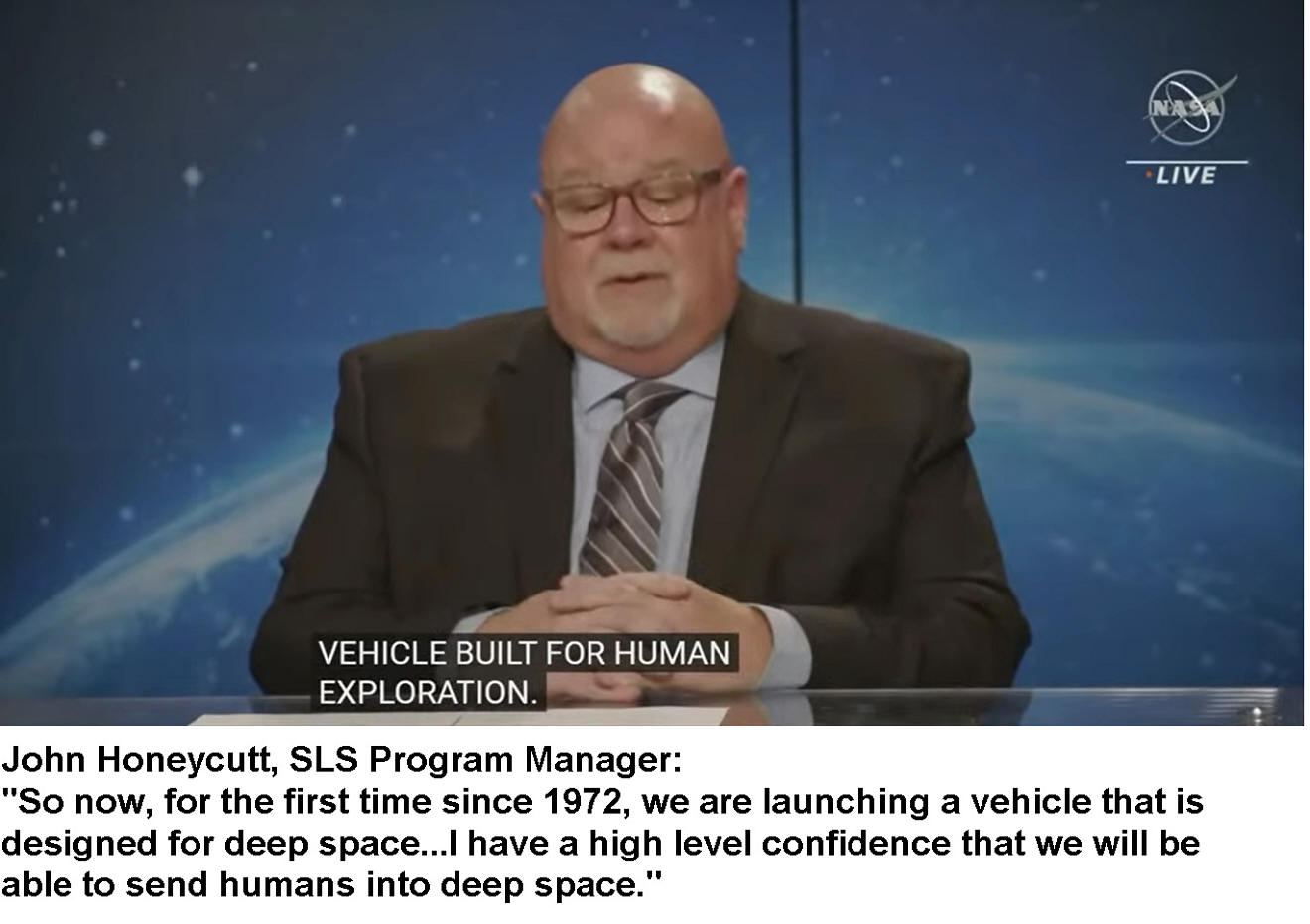
The $93-billion plan to put astronauts back on the Moon
https://www.nature.com/articles/d41586-022-01253-6?fbclid=IwAR0WECi3jvm8NZsOTOnZ6ld6AHUQbPZCBxyB-Hsc7J-6fs7CE8f1ieAjQ_I
Honest NASA engineers design
Van Allen Radiation Belt Storm Probes (RBSP)
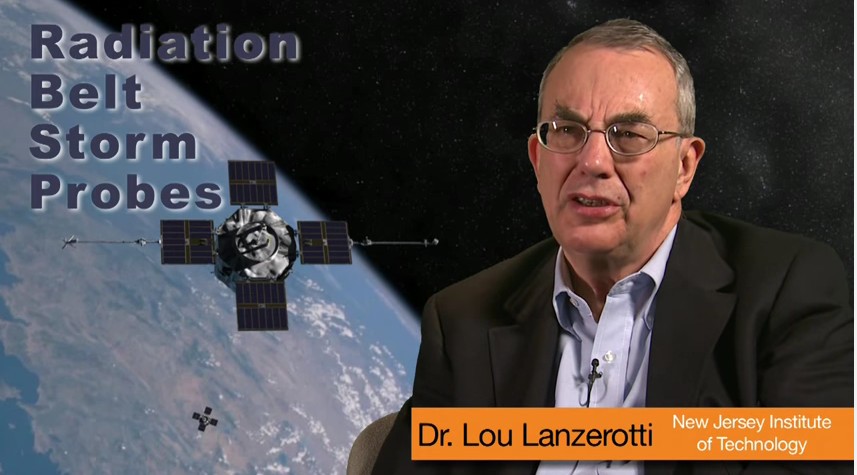



https://www.youtube.com/watch?v=3zNmgu6sQXk
Dr. Lou Lanzerotti - New Jersey Institute of Technology
Dr. Nicky Fox and Dr. Dan Smith - John Hopkins University, Applied Physics
Laboratory
"this critical region of space" (Critical means a matter of life or
death)
"these high energy particles can cause damage with any matter they come in
contact with"
"The radiation belts are two donut shaped regions that encircle the Earth.
They are the home to very intense radiation, both electrons and protons.
When these particles get energized they cause problems for satellites and
astronauts."
Why make an expensive probe of the Van Allen Belts if they were really "harmless"
to 1969-1972 Moon missions through them?
New Orion space capsule with radiation shielding
Apollo capsule was 6.4 tons. Orion capsule is 9.8 tons
Why not simply use the Apollo capsule again if it was sufficient?
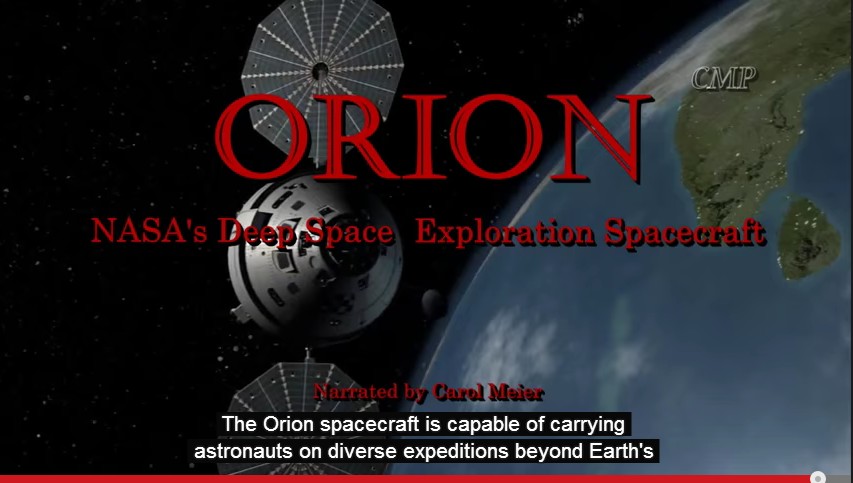
The Orion spacecraft is capable of carrying
astronauts on diverse expeditions beyond Earth's
|

orbit, ushering in a new era in human space exploration.
(new era? beyond Earth's orbit? Didn't Apollo do that?) |

Blocks shield radiation and high temperatures |
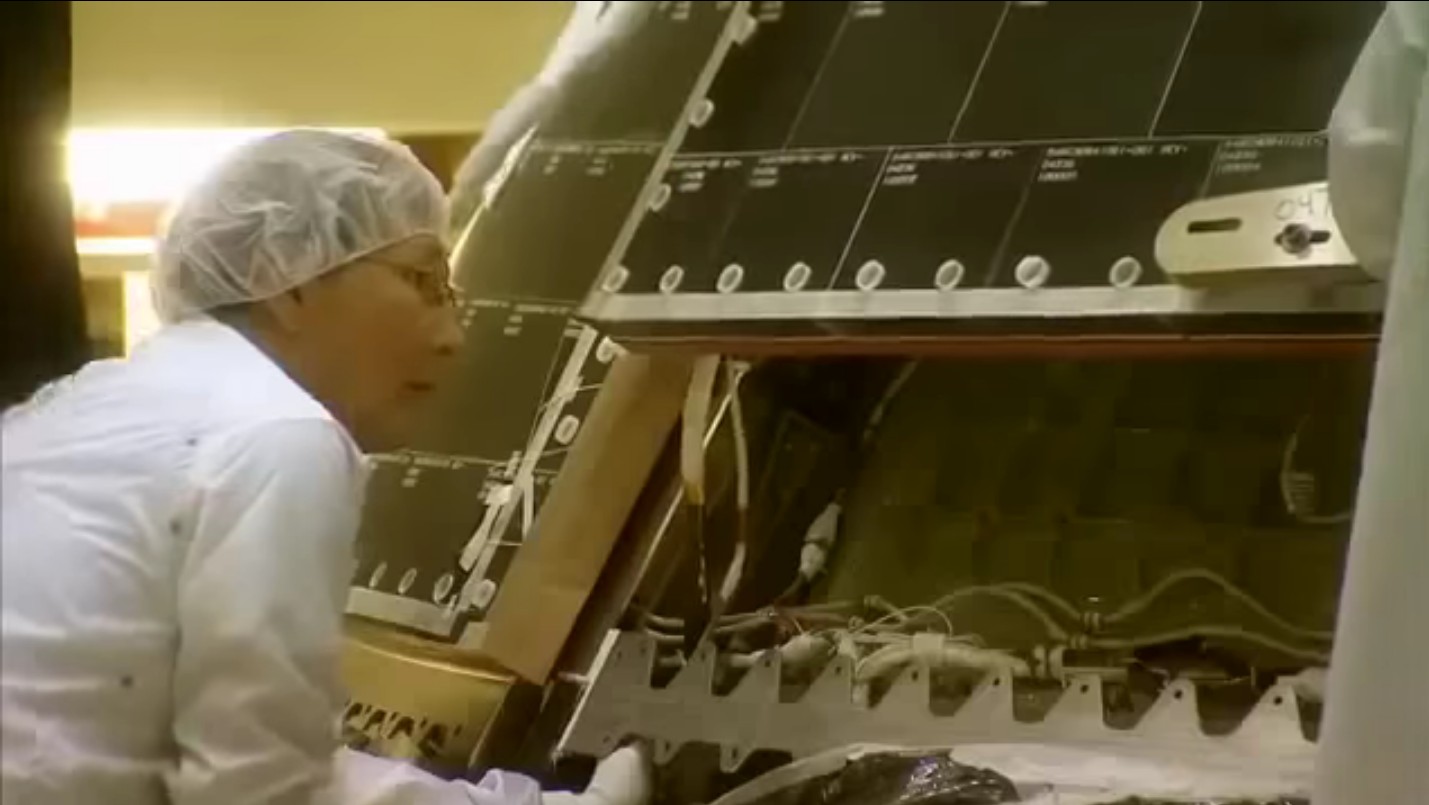
Black blocks of heavy, thick radiation shielding |
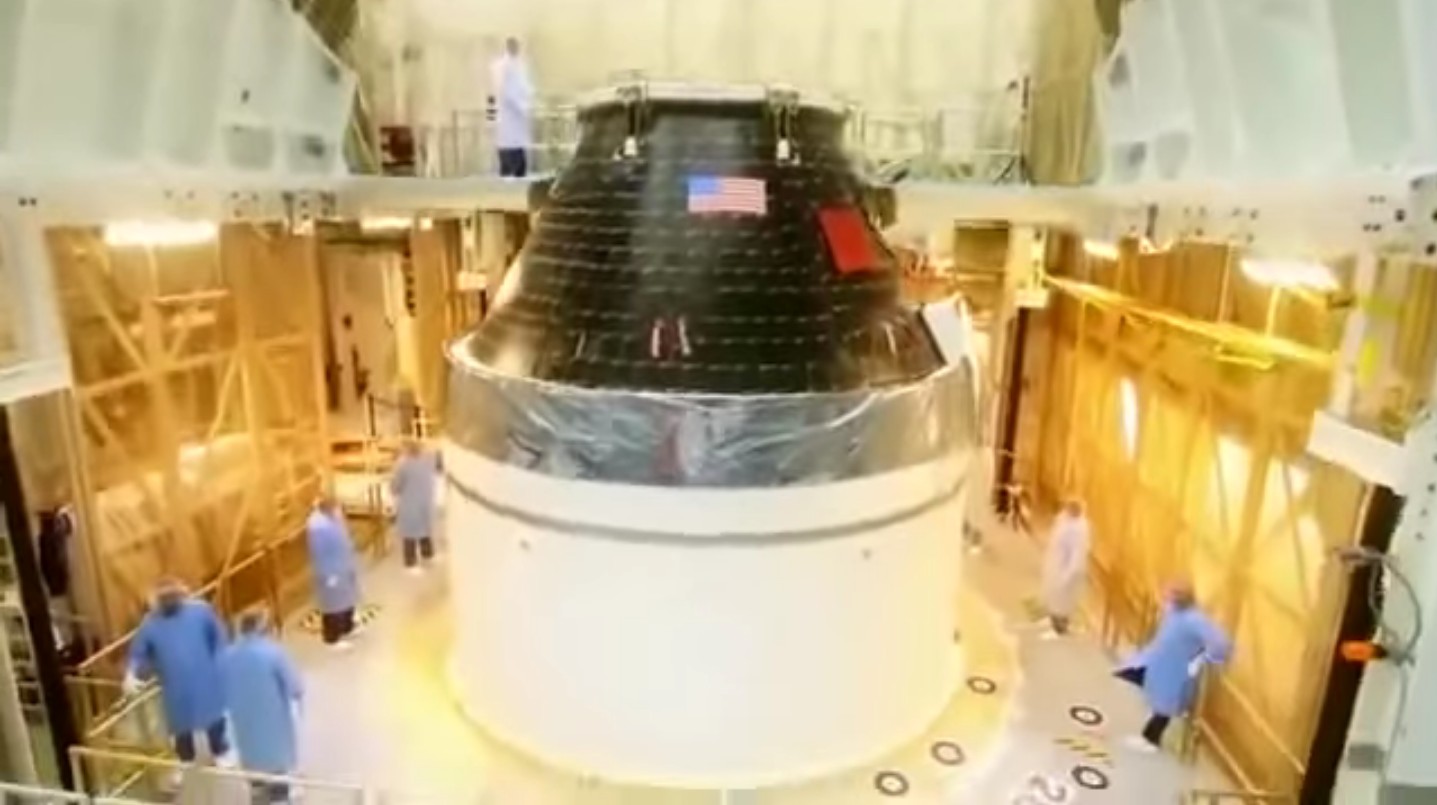
New Orion capsule with heavy, thick radiation shielding |

Covered with white metal |
Bill Kaysing
NASA Contractor - Engineer
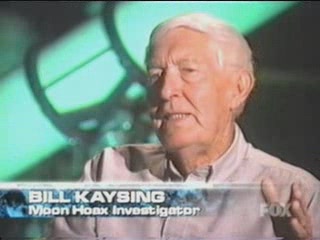
Bill Kaysing, US Navy officer, USC graduate, Rocketdyne head of technical
publications.
Author:
We
Never Went to the Moon: America's Thirty Billion Dollar Swindle (1976)
https://en.wikipedia.org/wiki/Bill_Kaysing
A funny thing happened on the way to the Moon
https://www.youtube.com/watch?v=IYNv24nNYnQ
https://www.youtube.com/watch?v=xciCJfbTvE4
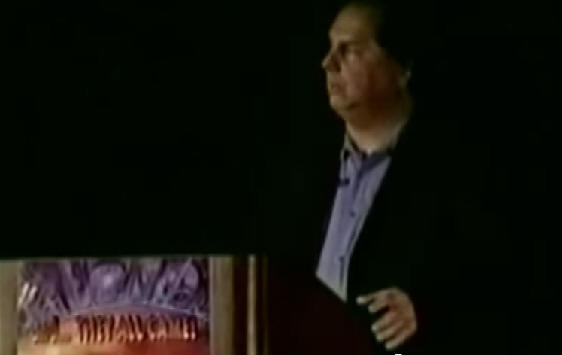
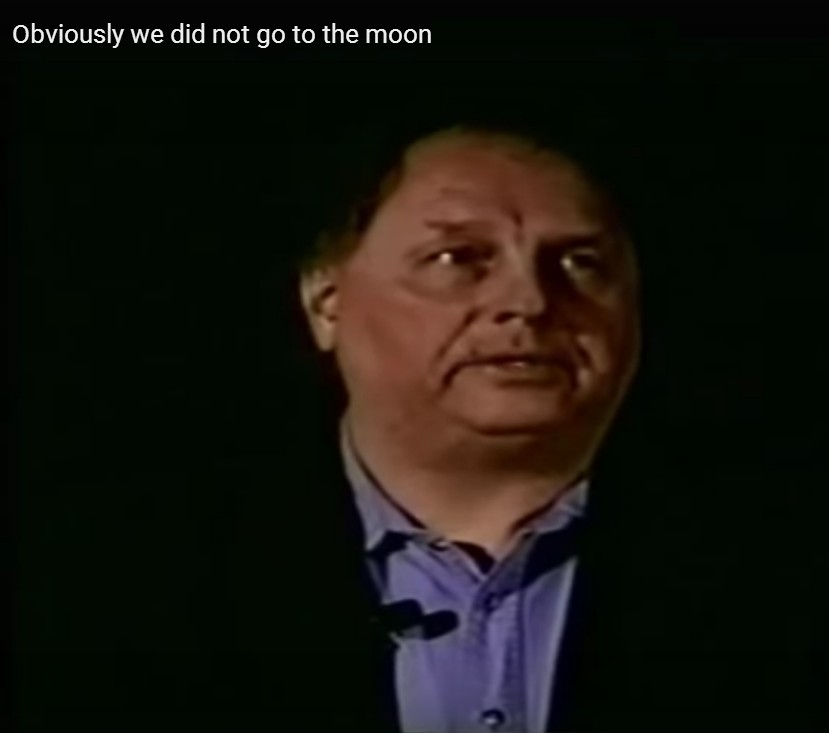

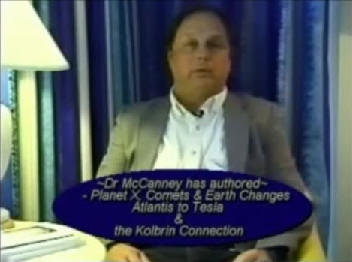
Prof. James McCanney, M.S. Physics
Professor at Cornell University
"Obviously, they didn't go to the Moon. The United States did not go to the
Moon.
The Russians knew it all along. I thought at the time we did, but I have
since learned, we absolutely did not."
https://youtu.be/d3jrLXkuKcw?t=2241
https://youtu.be/Z1UzHcavypY?t=381
https://www.youtube.com/watch?v=pSx86EQN7Rs
www.jmccanneyscience.com/
SLS Engine Test
NASA is still telling the truth up to a point, then
with a lie of omission
"The SLS is being developed to carry humans deeper into space than ever before,
to such destinations as an asteroid and Mars."
You also mean the MOON!
www.nasa.gov/exploration/systems/sls/multimedia/pedal-to-the-metal-rs-25-engine-revs-up-again.html
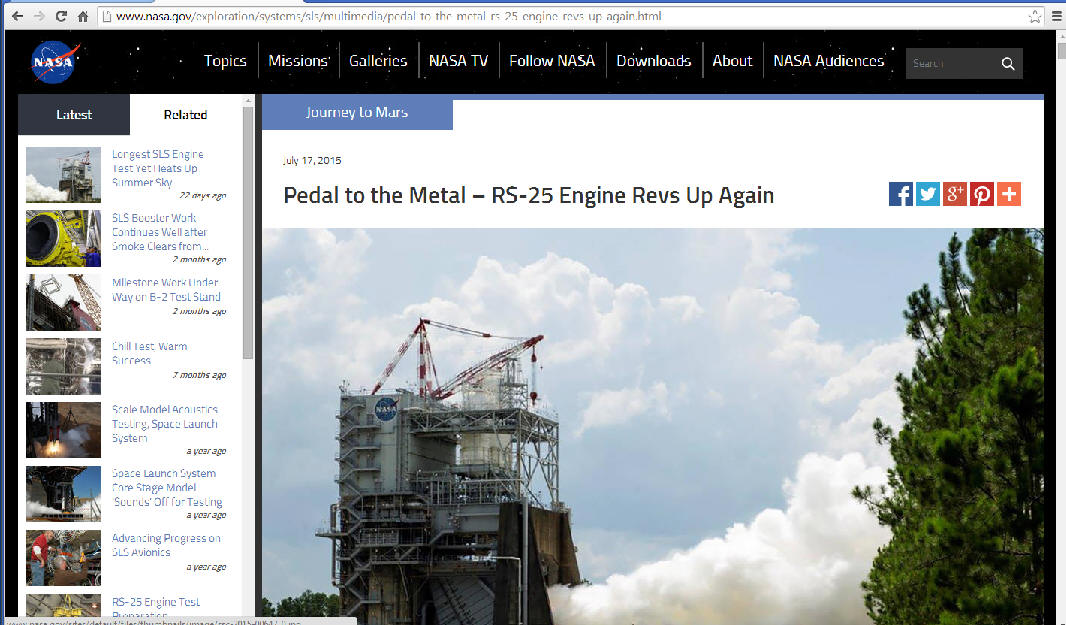
Bill Woods
Space rocket and propulsion engineer
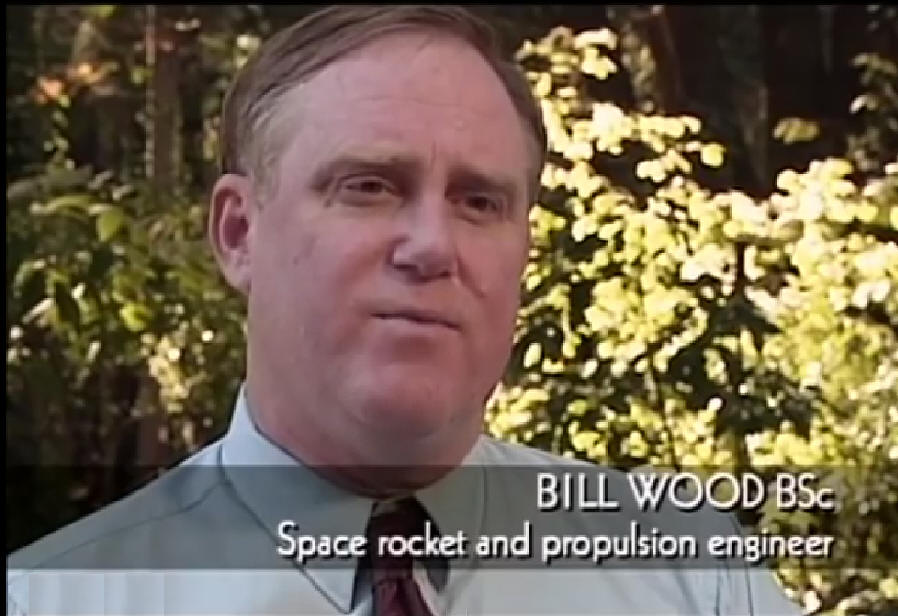
https://www.youtube.com/watch?v=qnHw-qwD3aM
"The LEM proposal was amazingly short. This was a 110
page document where Grumman proposed the entire LEM program, which is a $6.9
billion dollar program. And that's an outrageously small document for anyone to
submit and ask for $6.9 billion dollars. There's no way that a reviewer could
determine whether or not the contractor is going to accomplish anything
worthwhile based on 110 pages of documentation for that size program. When I
checked into 10 other programs of similar size, like the C5A and large submarine
orders, or aircraft carrier orders, or this type of thing, all the proposals
were between 5000 pages and 86000 pages, with an average of 38000 pages. And yet
we see this one standing there all by itself at 110 pages. And it appeared to be
to me that this may have been a situation where they knew that if anyone checked
then someone would say "well, in order to win this you had to submit a proposal
right? So let me see the proposal." So they had to produce a proposal but they
didn't go to the trouble producing one of decent length. A 110 page proposal is
about appropriate for a $1.4 million dollar program which is 5000 times smaller
in the claimed LEM program. Now, you wouldn't need very much a very long
proposal if you weren't really going to build a LEM that really had to work. If
you're going to be building LEMs that ended up in museums or on displays, then
you could probably do that for a few million dollars and it might only require a
110 page proposal."
More
Apollo Astronauts who dutifully obeyed the orders
of President Nixon
Neil Armstrong's Reluctance to Speak
Neil rarely gave interviews or talks, indicating he
did not like to lie

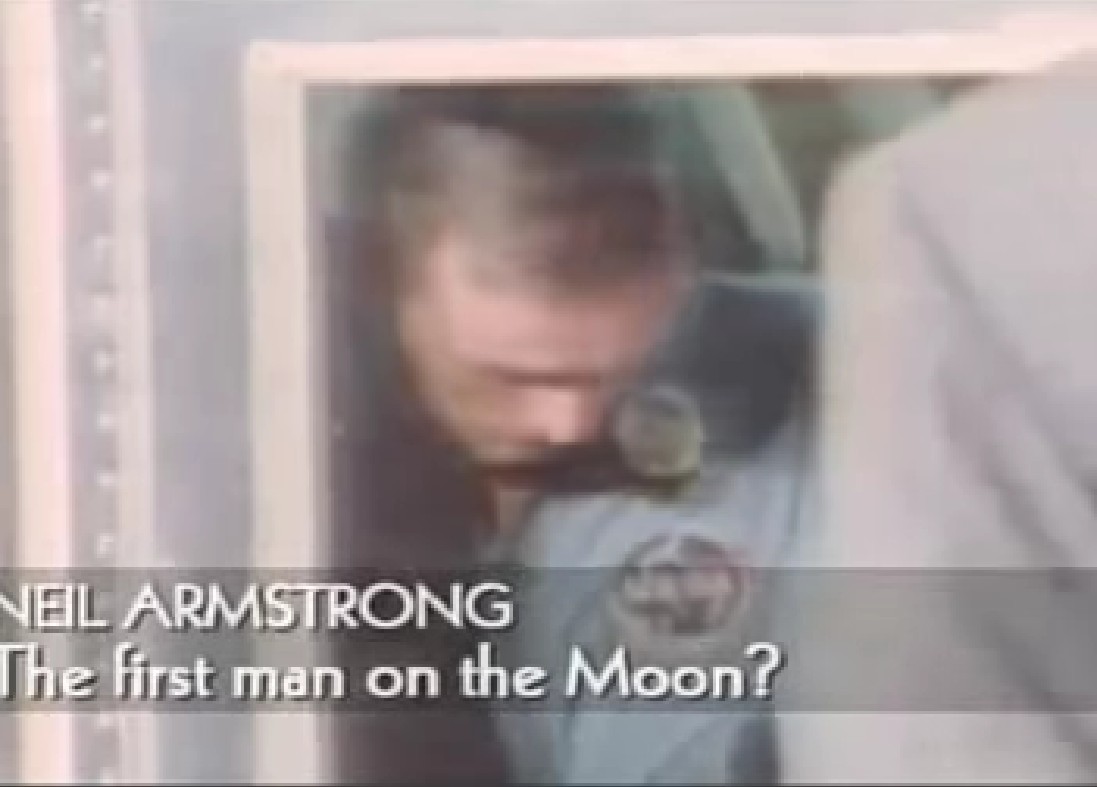
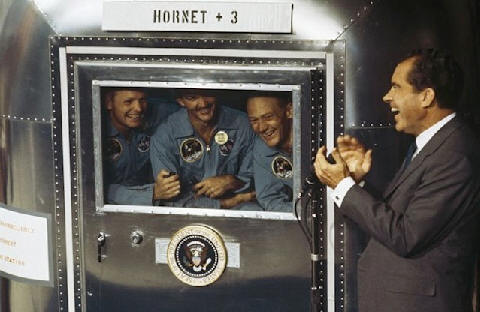
First Press Conference
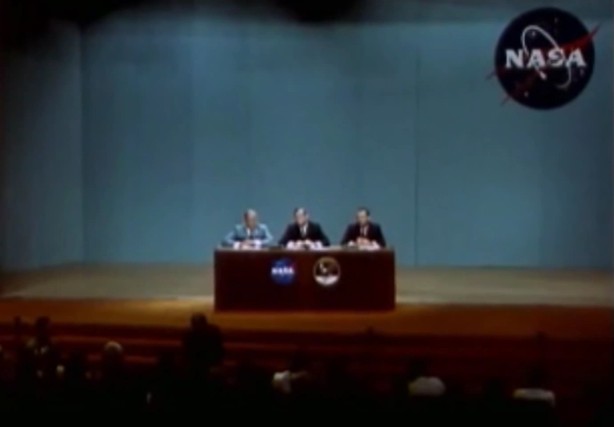

Why would men who went to the Moon look so sad?
With nerves of steel, why would they fidget with pencils?
|
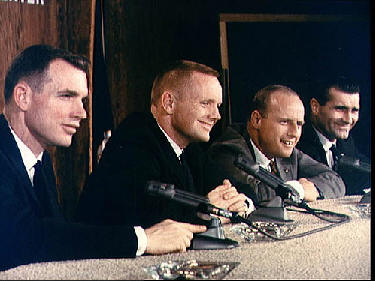
Gemini 8 Mission News Conference
1966
Neil Armstrong is happy, talkative and confident |
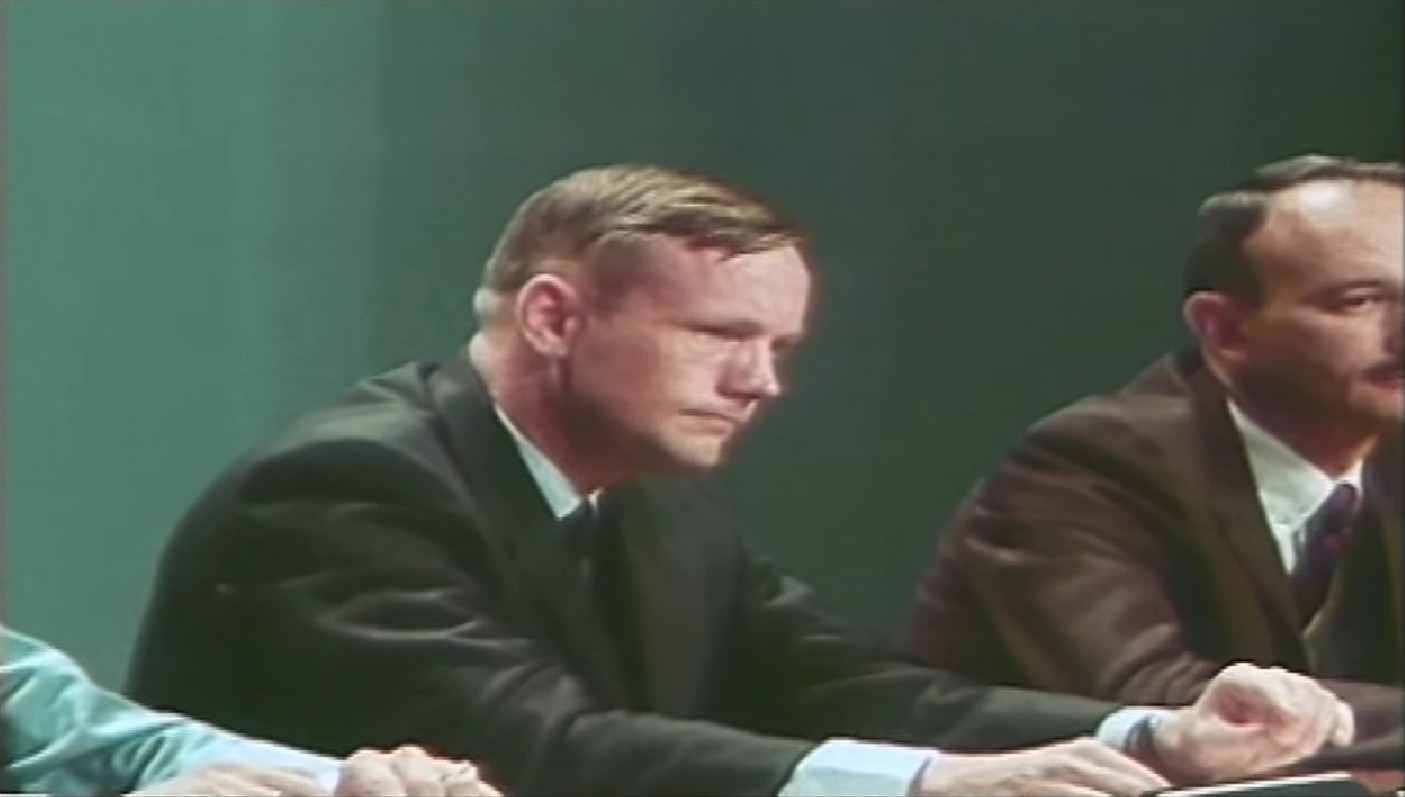
Apollo 11 Mission News Conference
1969
Neil Armstrong looks sad, silent and ashamed. |
White House - a rare appearance by Neil Armstrong
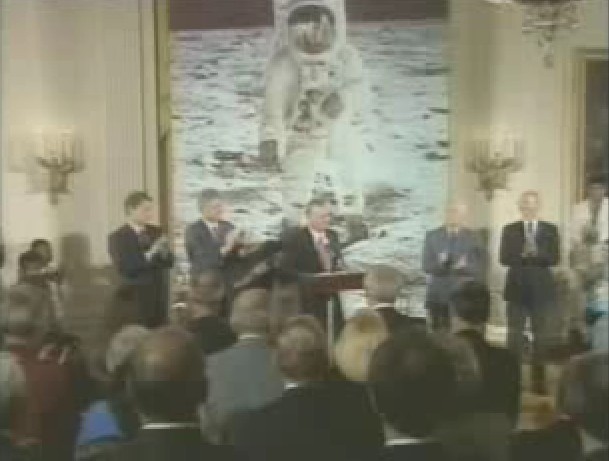
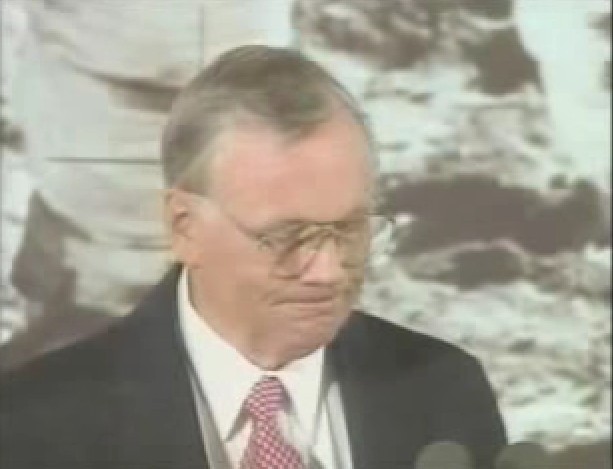
https://www.youtube.com/watch?v=DplDreUFcEM
http://www.thelivingmoon.com/47john_lear/02files/Neil_Armstrong_Disclosure.html
At the White House 25th anniversary of Apollo 11
said on July 20, 1994:
"Today we have with us a group of students, among
America's best.
To you we say we have only completed a beginning.
We leave you much that is undone.
There are great ideas undiscovered, breakthroughs available to those
who can remove one of the truth's protective layers.
There are places to go beyond belief.
Those challenges are yours--in many fields, not the least of which is space,
because there lies human destiny.
https://www.youtube.com/watch?v=SFPiwnVL9ic
http://www.thelivingmoon.com/47john_lear/02files/Neil_Armstrong_Disclosure.html
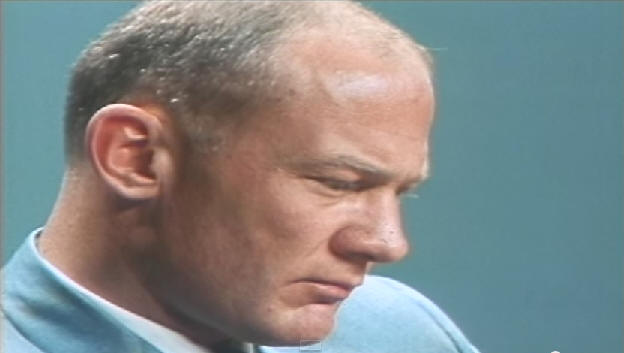
Buzz Aldrin also looked sad, silent, and ashamed
at the NASA press conference
Buzz gives a cryptic answer to a little girl who asks why NASA has not gone back
to the Moon.
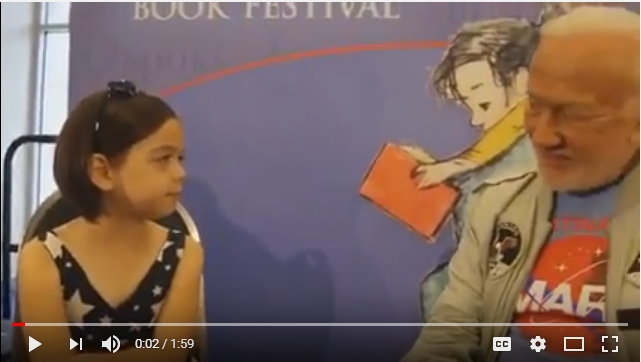
https://www.youtube.com/watch?v=_rr_PAL8iwM

Michael Collins
Body language says "I do not want to speak"
James E. Webb
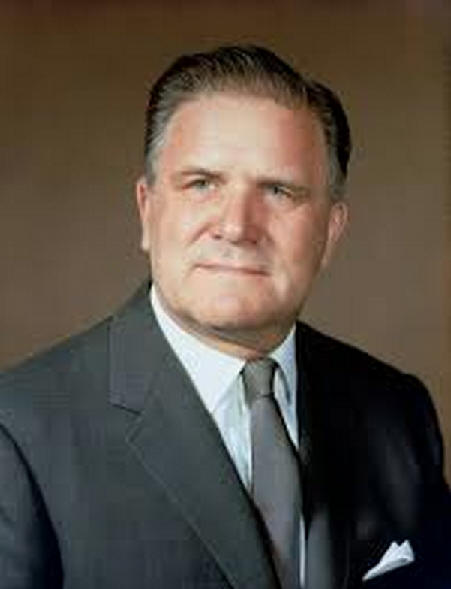
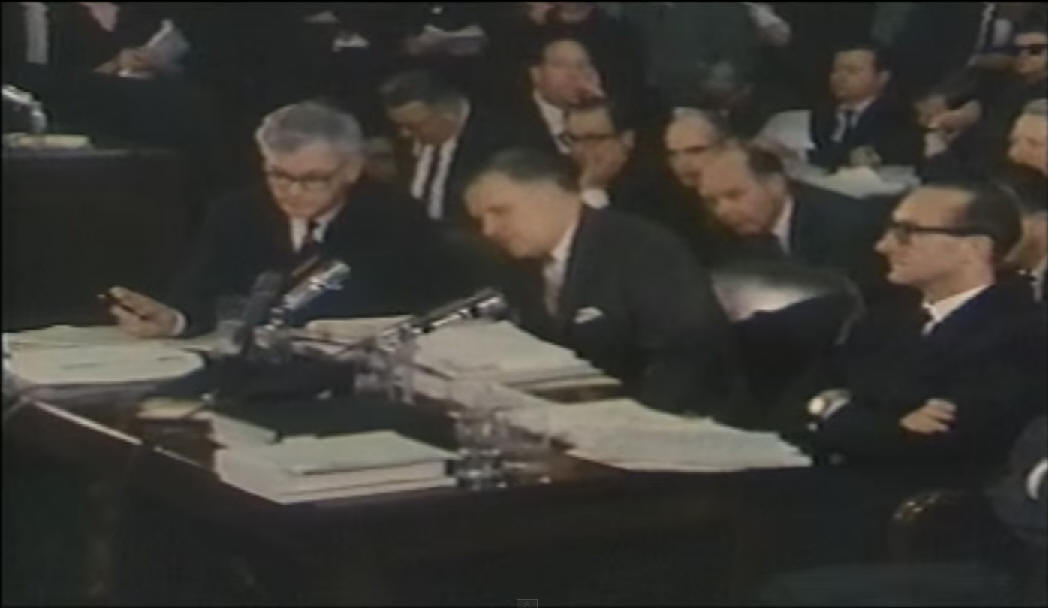
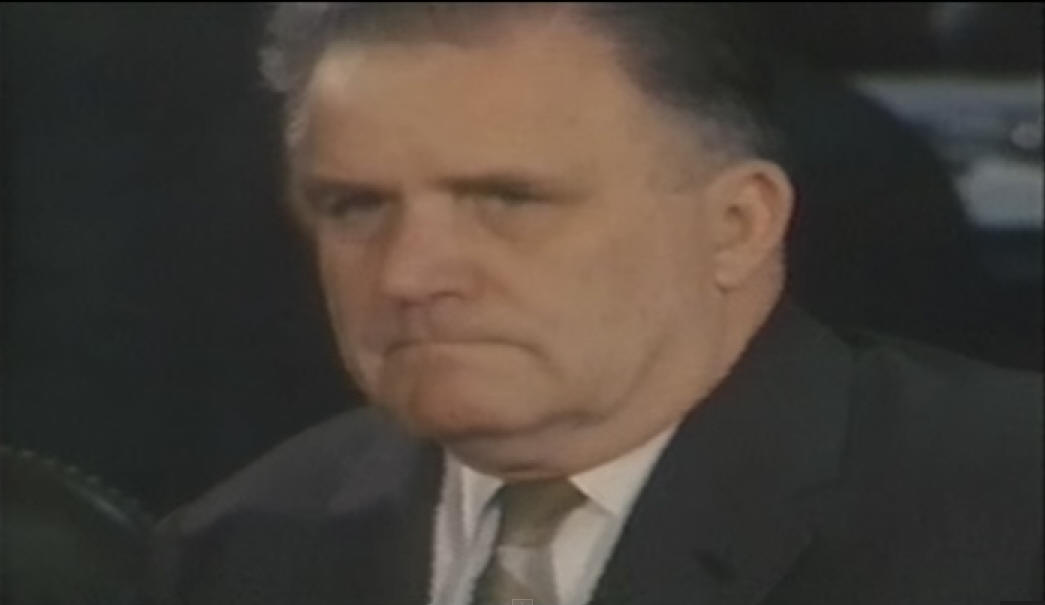
Top NASA Administrator resigned a few days before the first Apollo mission.
He was the 2nd Administrator Feb 14, 1961 - October 1968
Why, when it was just nearing completion?
He was a U.S. Marine, 2nd Lieutenant, and pilot 1930-1932 and 1944-1945
Born in NC October 7, 1906 and died March 27, 1992, Arlington National Cemetery


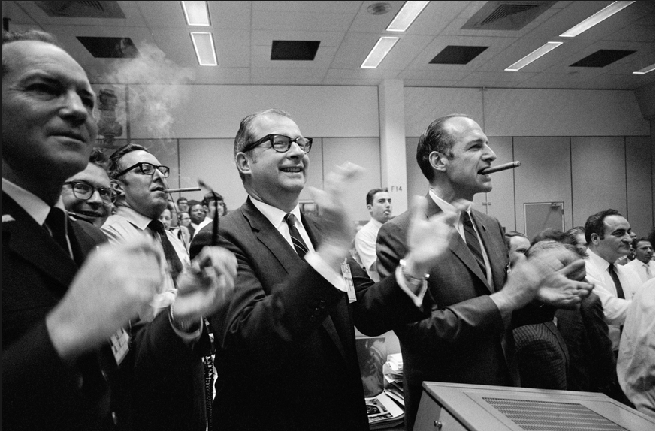
Succeeded by Thomas O. Paine March 21, 1969 - September 15, 1970
Some of his papers, donated to the Library of Congress, are
still classified.
Did they know?
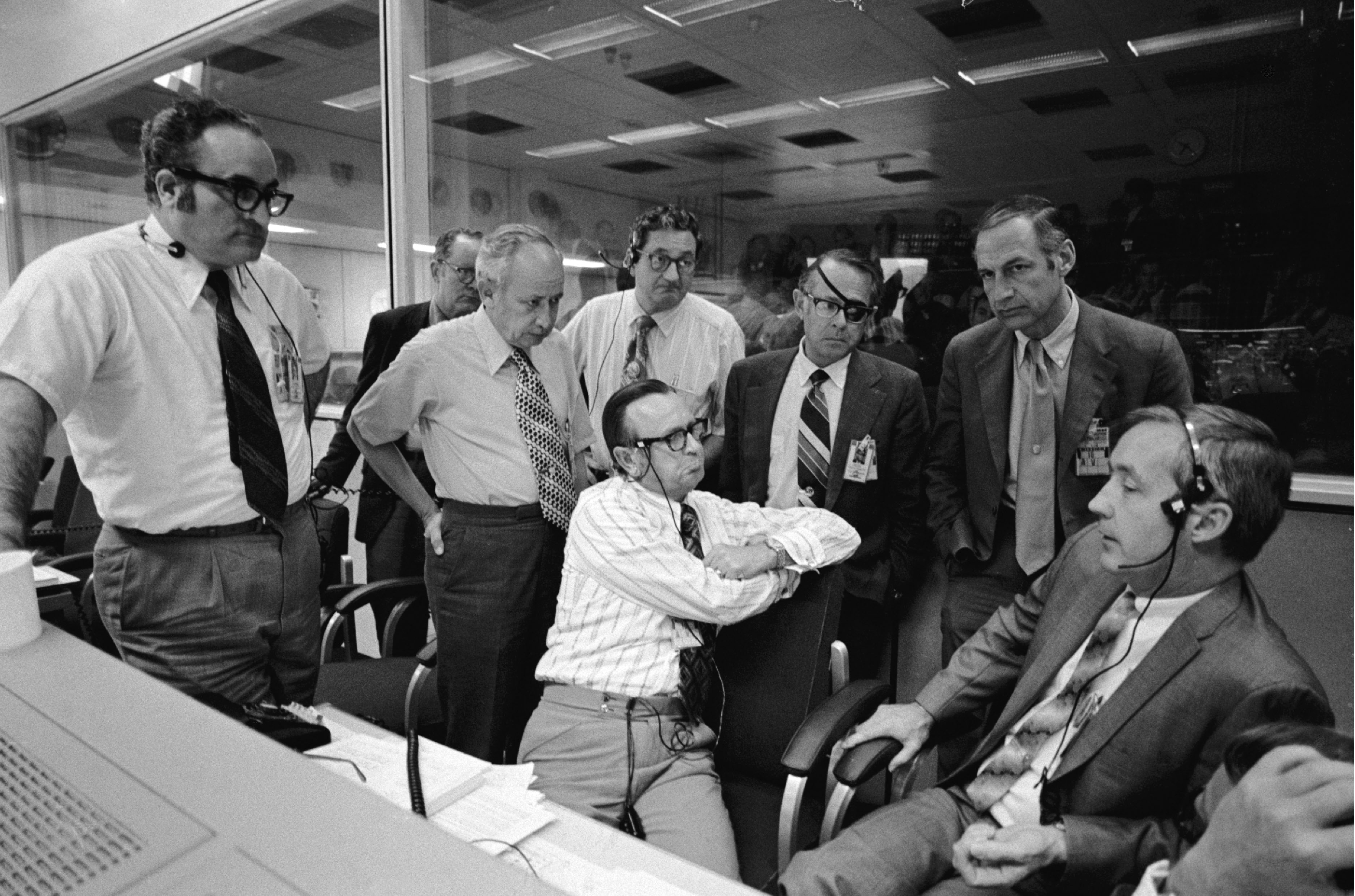
S72-37009 (20 April 1972) --- NASA officials gather around a
console in the Mission Operations Control Room (MOCR) in the Mission Control
Center (MCC) prior to the making of a decision whether to land Apollo 16 on the
moon or to abort the landing. Seated, left to right, are Dr. Christopher C.
Kraft Jr., Director of the Manned Spacecraft Center (MSC), and Brig. Gen. James
A. McDivitt (USAF), Manager, Apollo Spacecraft Program Office, MSC; and
standing, left to right, are Dr. Rocco A. Petrone, Apollo Program Director,
Office Manned Space Flight (OMSF), NASA HQ.; Capt. John K. Holcomb (U.S. Navy,
Ret.), Director of Apollo Operations, OMSF; Sigurd A. Sjoberg, Deputy Director,
MSC; Capt. Chester M. Lee (U.S. Navy, Ret.), Apollo Mission Director, OMSF; Dale
D. Myers, NASA Associate Administrator for Manned Space Flight; and Dr. George
M. Low, NASA Deputy Administrator. Photo credit: NASA
Werner Von Braun
Estimated that 2 rockets would be necessary to go to
the Moon,
and that 1 would need to be as tall as the Empire State Building.
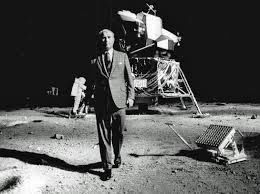
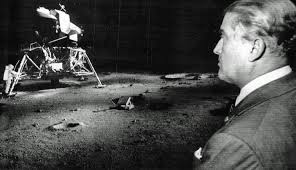
There is just one thing I can promise you about the
outer-space program - your tax-dollar will go further.
Research is what I’m doing when I don’t know what I’m doing.

Why would Von Braun need to meet with Walt Disney?
Apollo 14 busted by "3rd Man on the Moon"
Edward Mitchell and Alan Shepard - and a Whistle Blower's foot
pops up


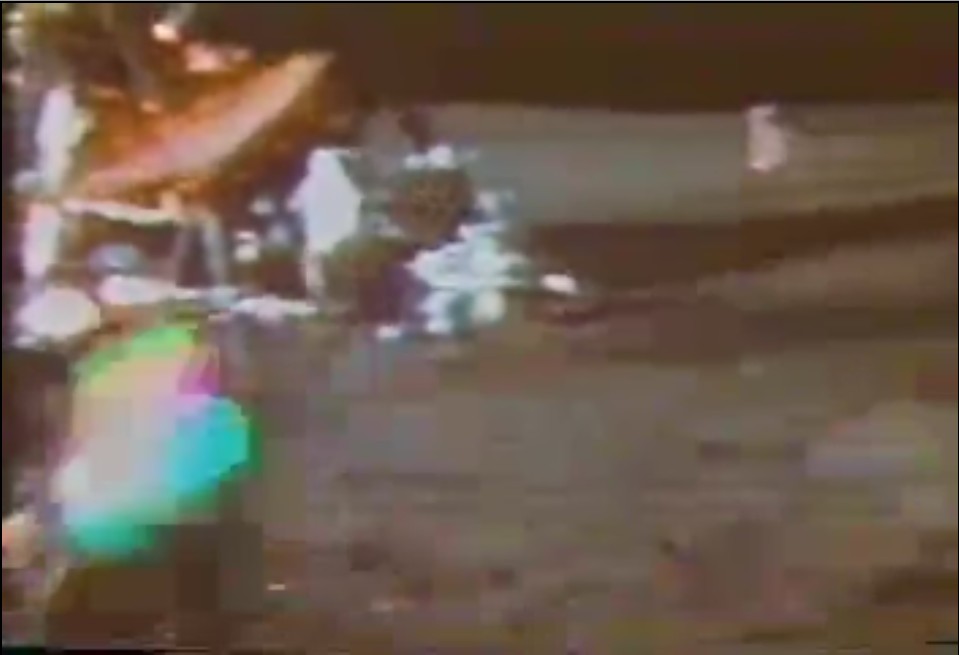
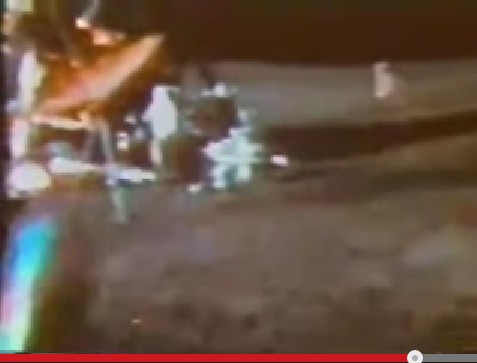


Camera man with honesty stuck his foot up quickly
possibly in protest to expose the fakery.
https://www.youtube.com/watch?v=LouHGOEMmK0
http://next.nasa.gov/alsj/a14/a14.clsout2.html#1351957
ThirdManOnMoon.wmv (about 3/4 through at the 2:22
minute point)
NASA claims that Al Shepard pulled the camera's cable with his foot
although he says nothing of it. The object is too thick for a cable,
which was on a tripod. The camera does not move or tip over.
The smoking gun...
|
 |
 |
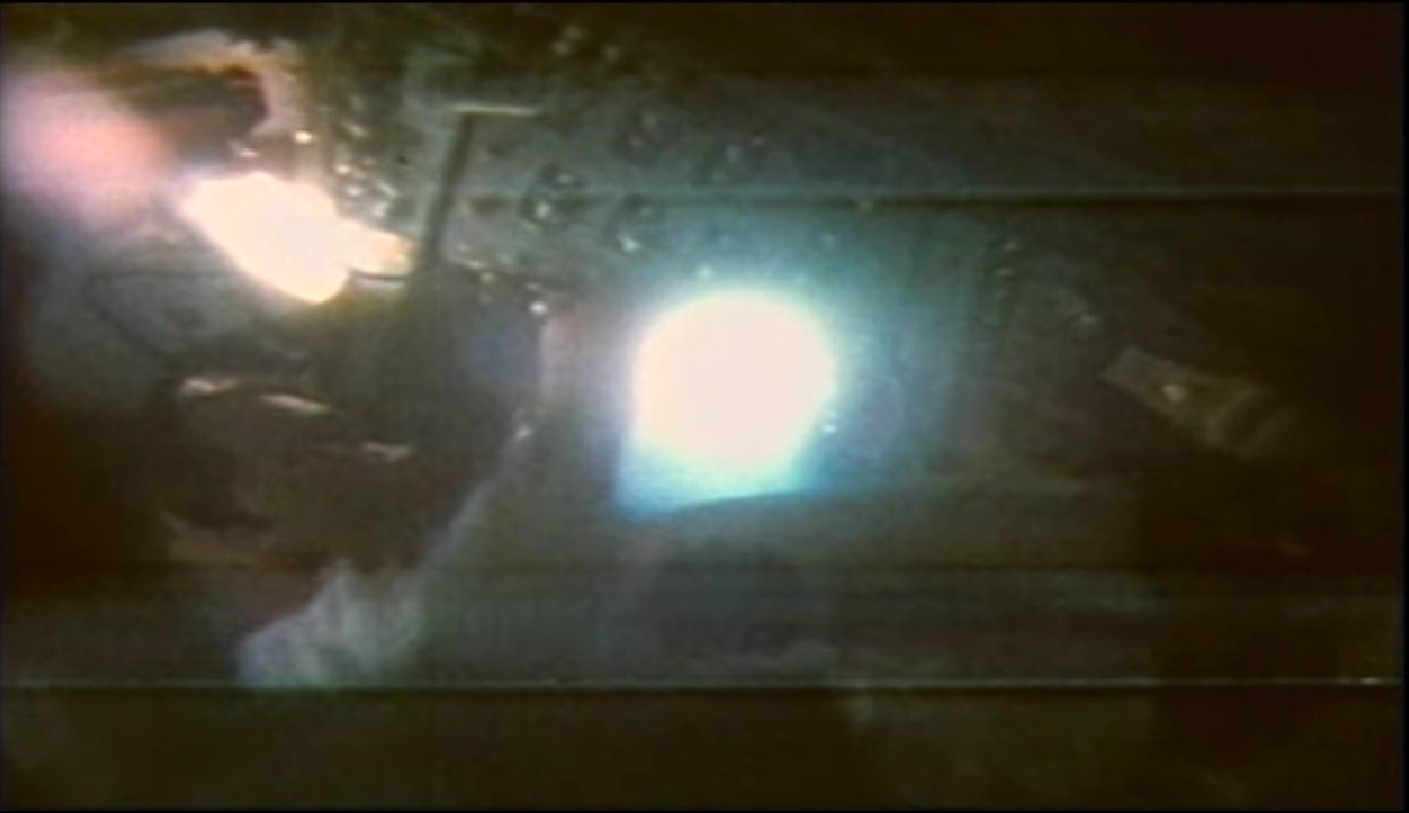 |
|
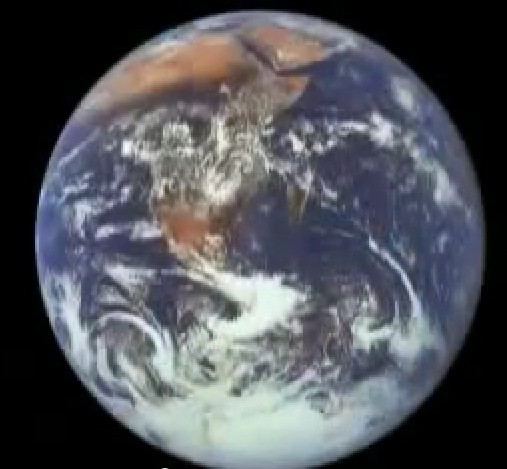
1. Be in low Earth orbit |

2. Move camera far from round window |

3. Turn out the lights |
|
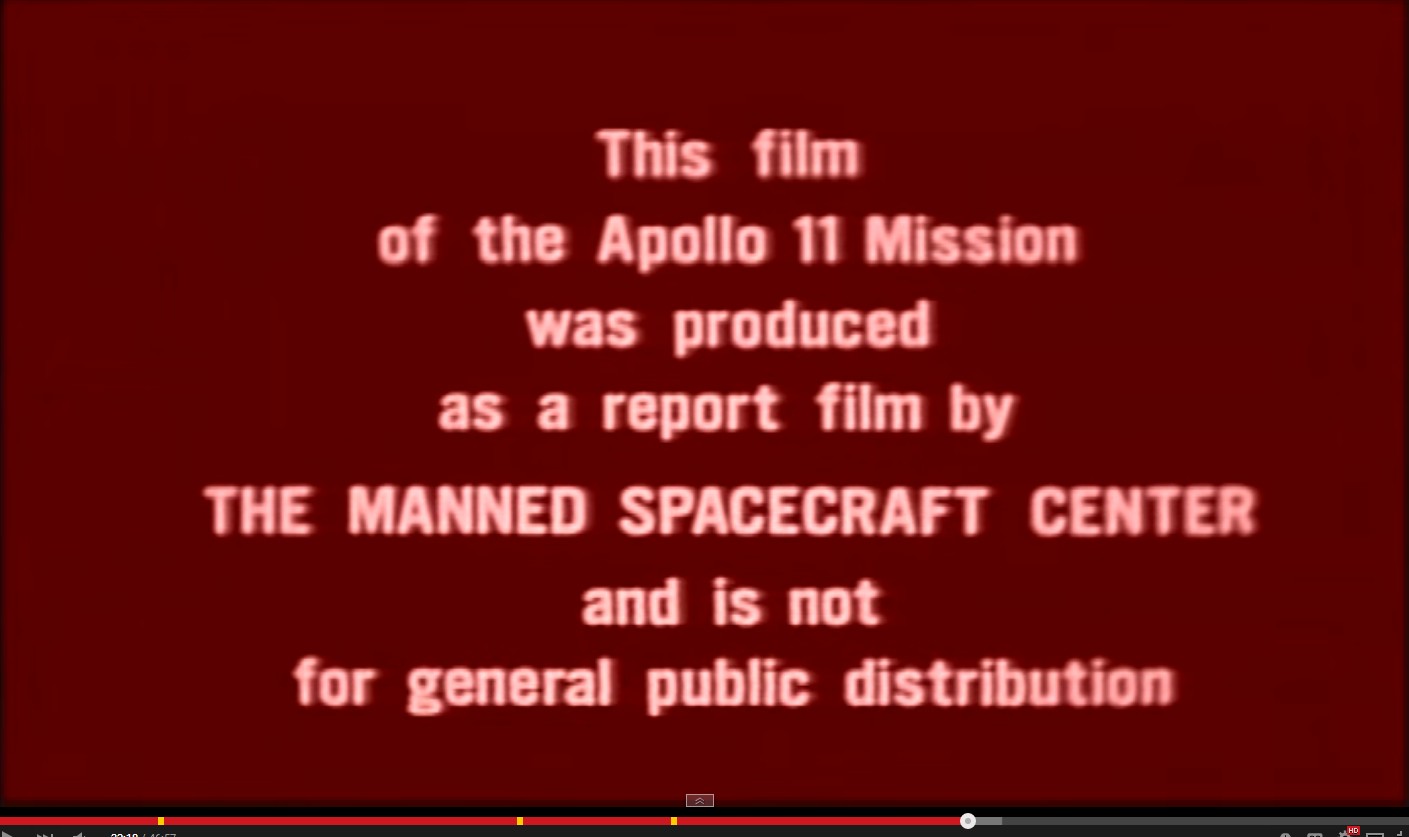 |

Earth looks like a fake model - too turquoise |
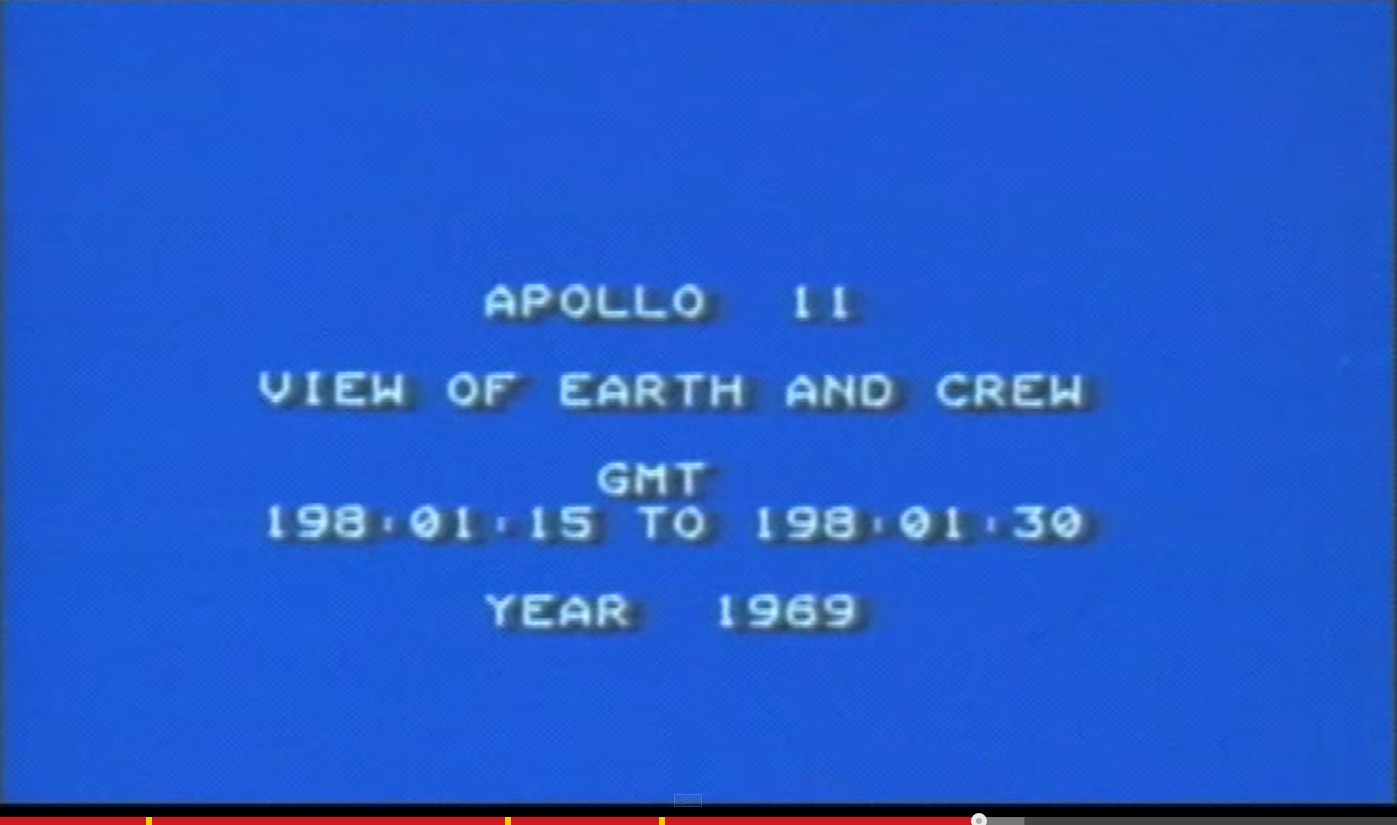
|

 NASA
staff admits never leaving low Earth orbit yet
NASA
staff admits never leaving low Earth orbit yet












 `
`































































